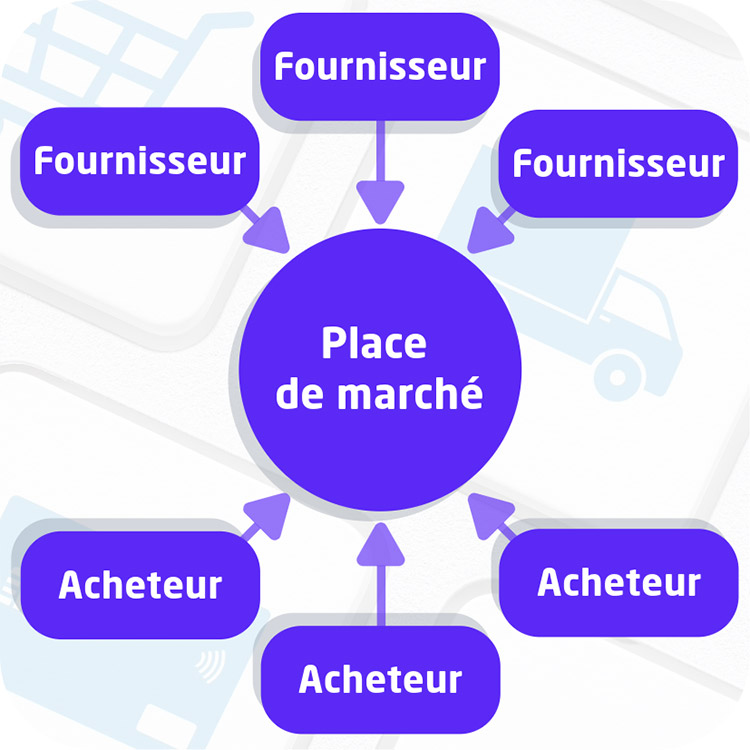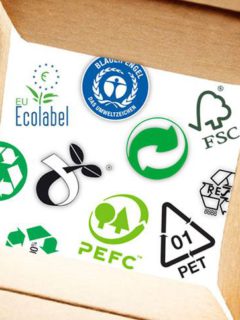E-procurement involves digitising your entire purchasing process via a centralised system. This offers you a number of advantages as a company. Buy your orders faster and more easily? Now you can in no time at all. At RAJA, we also believe in the power of e-procurement. That’s why we offer 4 solutions to digitise your purchasing process. We show below, step by step, how e-procurement can help your business optimise even faster.
1. What is e-procurement?
E-procurement refers to the purchase of goods or services using computer systems. In general, these processes take place via the Internet. This is particularly relevant to the B2B sector. E-procurement was first developed to facilitate the purchase of goods between companies.
Before digitalisation, a company had to go through many separate steps to order goods. This was often done by e-mail, telephone or even post. At each of these stages, (human) errors could occur. Today, this process can be shortened considerably. Thanks to e-procurement, the purchase of goods takes place largely via an automated process, sometimes at the click of a button.
- E-procurement = the entire digital procurement process, from order to payment.
- E-fulfillment = electronic order processing.
- ERP (Enterprise Resource Planning) = the software solution linking all a company's processes (such as e-procurement).
- EDI (Electronic Data Interchange) = the electronic exchange of business documents, such as orders or invoices. EDI messaging always follows an agreed standard, so that the software systems of companies communicating with each other use the same coding.
- Procure to Pay (P2P) = the process by which a company can obtain the goods and services it needs from its suppliers.
- Source to Pay (S2P) = the entire procurement process, from the moment a company identifies a need for a product (sourcing) to the final payment to the supplier (pay).
2. What are the advantages of e-procurement?
E-procurement offers many advantages over traditional procurement processes – and that goes for all businesses! Take a look below:
- Automate your purchasing : this is at the very heart of e-business. You can save considerable time and resources. Your staff will be able to focus on more strategic tasks. By assigning roles and responsibilities to your (purchasing) colleagues, you can completely streamline the purchasing process. What’s more, this digitised process reduces the risk of ordering errors.
- Benefit from a personalised offer: the products in your e-business tool are generally fully tailored to your company’s account, giving you a personalised buying experience. Generally, only those products that are useful to you are displayed. Easy and practical!
- Improve your knowledge: e-procurement gives your company an overview of its purchasing processes. What’s more, you can track the status of orders more accurately and easily consult their history.
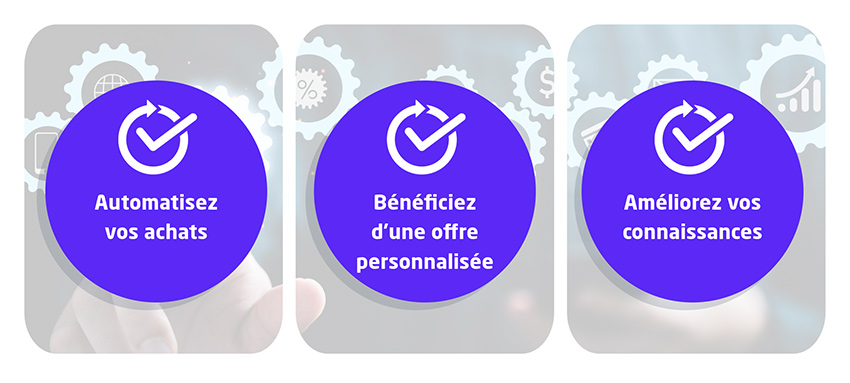
3. What solutions does RAJA offer?
With www.rajapack.be, RAJA offers a one-stop shop for all your packaging, warehouse equipment and office supplies. Our customers can also choose from a range of e-procurement solutions, tailored to the needs of their purchasing teams.
Good to know: all these solutions can be designed and integrated free of charge by RAJA. To do this, we use Saas (Software as a service), which means you don’t have to install any software. All our e-procurement solutions are accessible via the cloud using a browser. You can choose from the 4 solutions below.
► Purchase management via rajapack.be
This interface most closely resembles our standard online shop interface. It allows you to view all our products, see your negotiated prices and simplify the purchasing process. Thanks to the integrated search engine, you can browse the entire up-to-date catalogue.
- Ideal for those who don’t yet use an e-procurement tool.
- Automatic updating of RAJA stocks and prices.
- Consult your purchase lists, invoices and order history online.
- Suitable for small purchasing teams.
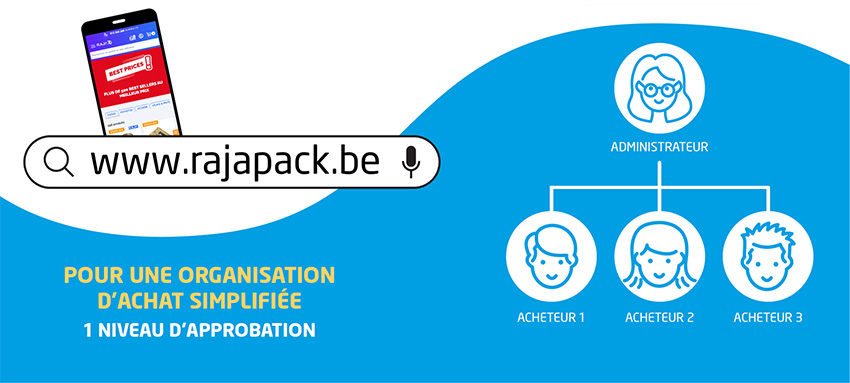
► MyRAJAShop
This solution offers all the benefits of e-business, but within the framework of your regular user account on www.rajapack.be. Using a personal RAJA account, you can set up a fully digital purchasing team and determine the approval processes. This way, as administrator or lead buyer, you keep the budget under control, from A to Z.
- Ideal for those not yet using an e-procurement tool.
- Personalised product offers (always up to date) and an overview of your negotiated prices.
- More sophisticated budget management and implementation of an approval process.
- Suitable for a structured purchasing organisation.
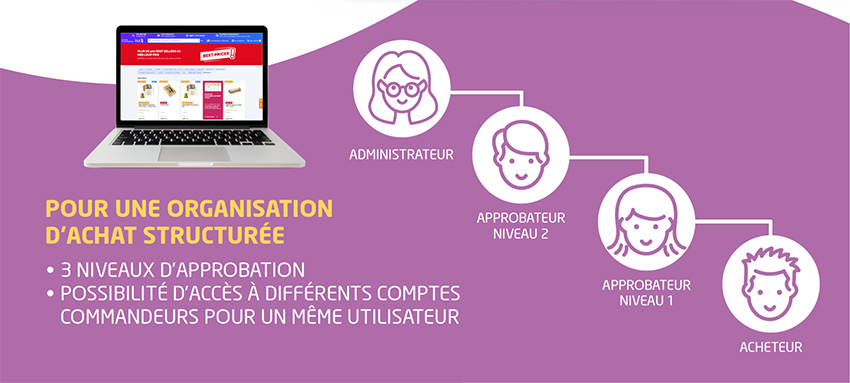
► Hosted Catalog – static catalogue
From your multi-vendor purchasing system or ERP, you access a selection of RAJA products at your negotiated prices. Depending on your validation process, you can then easily place an order. However, this solution requires manual adjustment each time prices or products are updated. This is why it is also referred to as a “static catalogue”. As a customer, RAJA provides you with a BMEcat, CSV or Excel file that you need to upload into your purchasing system.
- Ideal for those who already use an e-procurement tool.
- Fully customised product offering, including preferential rates.
- Manual update required for new products or prices.
- Suitable for those wishing to standardise their multi-vendor purchasing process.
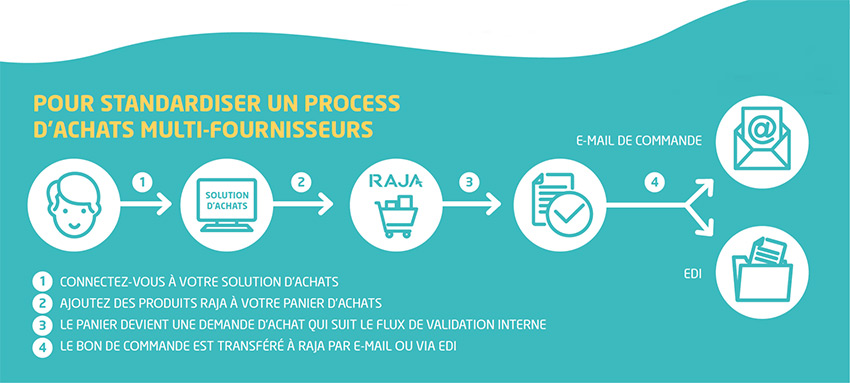
► Punch Out Catalog – dynamic catalogue
Punch Out offers a dynamic solution that works from your own purchasing system or a multi-vendor platform. Within such a platform, you will have access to a personalised version of rajapack.be, where all your pricing conditions can be found. Unlike a hosted catalog, all RAJA data is updated automatically. You benefit from a familiar shopping environment and direct access to a personalised, up-to-date RAJA product catalogue.
- Ideal for those already using an e-procurement tool.
- Fully personalised product offering, including negotiated prices.
- Automatic updating of product information by RAJA.
- Suitable for those who want to optimise their purchasing process as much as possible.
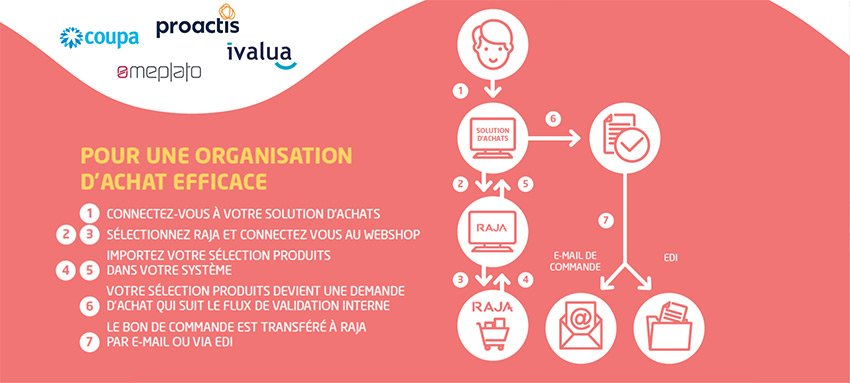
4. How does e-procurement work?
All the steps in the purchasing process that you used to follow on paper are completely digitised thanks to e-procurement. Such an e-business system can provide an overview of offers, approval processes, transactions, monitoring, payments and reports. We can distinguish two types of purchasing system: systems based on the type of user connection or on the type of user profile.
4.1 Systems according to user connection type
1) Closed systems: in this case, only 2 companies have access to the same system in order to be able to communicate and trade with each other. Other companies are excluded. This architecture offers a wide range of services and is interesting if you want to set up a long-term collaboration with a single supplier.
2) Semi-open systems: these systems are generally developed by large distributors. In this case, customers have access to a portal where they can purchase goods. Semi-open systems are designed as buy-side or sell-side systems (which you will find out more about later).
3) Open systems: these are known as “many-to-many” solutions. In this case, the catalogues of different suppliers are integrated into an open e-procurement system. Suppliers can offer their products and buyers can specify their requirements at the same time. In a way, it is a marketplace managed by a third party.
4.2 Systems by user profile type
1) Sell-Side system: this system is also called the “supplier system“, because the initiative for purchasing comes from the supplier (a company like RAJA, for example). The supplier provides the purchasing platform that customers can use. In doing so, it determines both the product range and the prices. The supplier also bears the costs of creation and maintenance.
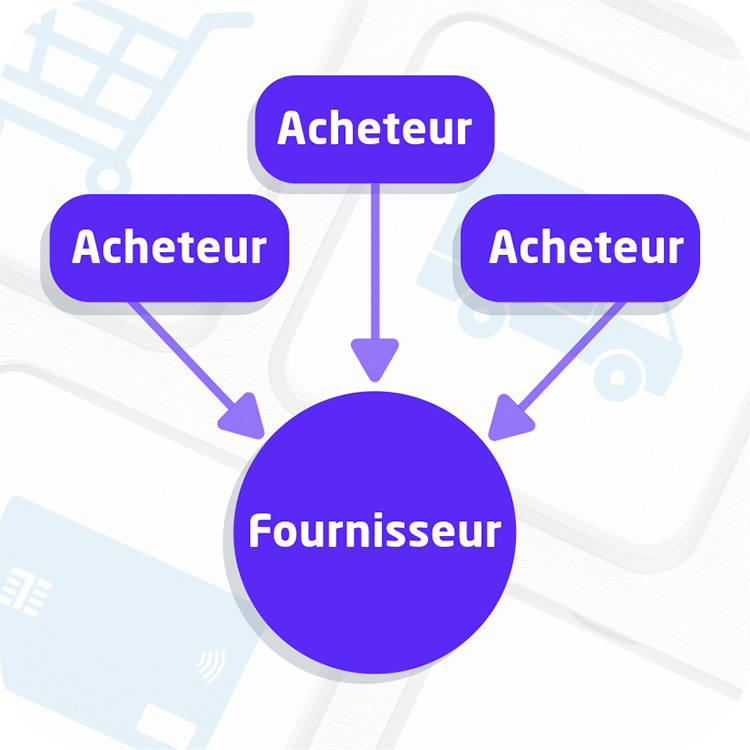
2) Buy-Side system: this is a system created by a company’s purchasing department. The buyer can use it to formulate specific requirements that a supplier, product or service must meet. This system is particularly useful in large companies, where purchasing volumes are high. Different suppliers can then present their products in the system by means of a call for tenders, for example.
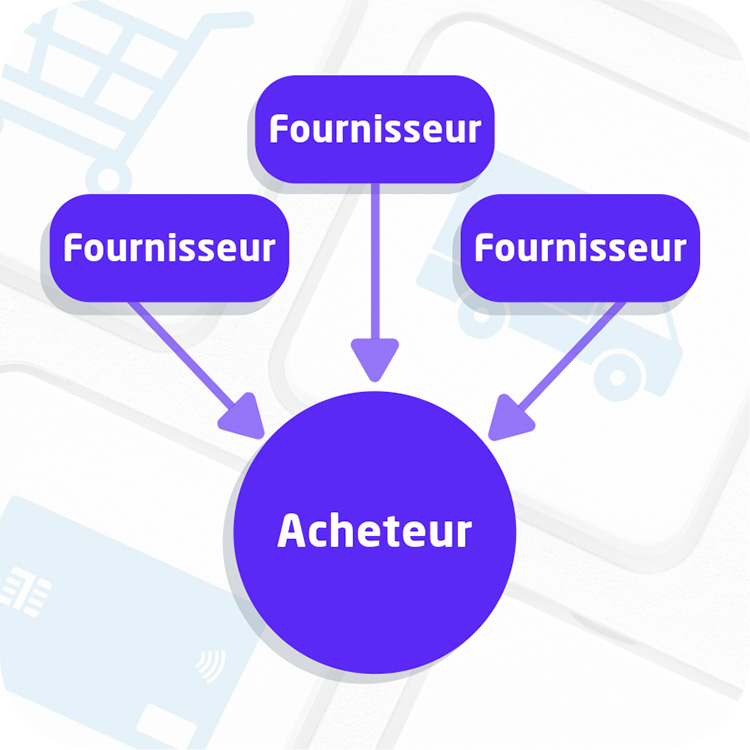
3) Many-to-Many system: this system is comparable to a marketplace. An independent third party will provide the platform and charge the costs. Buyers and suppliers can connect to this system. Since several participants use the marketplace, costs are reduced and buyers can easily compare suppliers’ prices.
